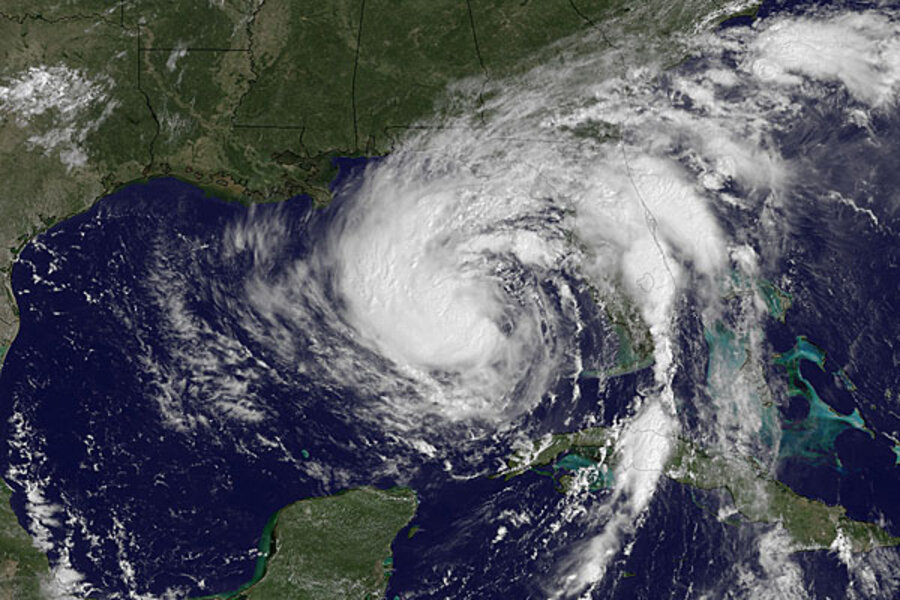Tropical Storm Isaac expected to hit Gulf Coast as hurricane
Loading...
| NEW ORLEANS
Tropical Storm Isaac rolled over the open Gulf of Mexico on Monday, where it was expected to grow into a hurricane before hitting land somewhere between Louisiana and Florida close to the seventh anniversary of the devastating Hurricane Katrina.
The storm that left 24 dead in Haiti and the Dominican Republic over the weekend had shifted course from Tampa, where the Republican National Convention had pushed back its start to Tuesday in case Isaac passed closer to the gulfside city.
The National Hurricane Center predicted the storm would grow to a Category 1 hurricane over the warm Gulf and possibly hit late Tuesday somewhere along a roughly 300-mile (500-kilometer) stretch from the bayous southwest of New Orleans to the Florida Panhandle.
That would be one day shy of seven years after Hurricane Katrina struck in 2005, although Katrina was a much stronger Category 5 storm with winds over 157 miles (252 kilometers) per hour. Isaac was expected to have top winds of around 90 mph (145 kph) when it hits land.
The size of the warning area and the storm's wide bands of rain and wind prompted emergency declarations in four states, and hurricane-tested residents were boarding up homes, stocking up on food and water or getting ready to evacuate.
Federal Emergency Management Agency officials said the updated levees around New Orleans are equipped to handle storms stronger than Isaac. Levee failures led to the catastrophic flooding in the area after Katrina, which killed 1,800.
FEMA Administrator Craig Fugate, in a conference call with reporters, said people shouldn't focus just on New Orleans. "This is not a New Orleans storm. This is a Gulf Coast storm. Some of the heaviest impact may be in Alabama and Mississippi," he said.
At 11 a.m. EDT (1500 GMT), Isaac remained a tropical storm with top sustained winds of 65 mph (100 kph). Its center was about 310 miles (500 km) southeast of the mouth of the Mississippi River, and it was moving northwest at 14 mph (22 kph).
If the storm hits during high tide, it could push floodwaters as deep as 12 feet (four meters) on shore in Louisiana, Mississippi and Alabama and up to six feet (1.8 meters) in the Florida Panhandle.
Louisiana Gov. Bobby Jindal called a state of emergency, and 53,000 residents of St. Charles Parish near New Orleans were told to leave ahead of the storm. The governors of Mississippi, Florida and Alabama also declared states of emergency.
The U.S. government said 78 percent of the oil production in the Gulf of Mexico had been halted in preparation for Isaac. The Bureau of Safety and Environmental Enforcement said about 1 million barrels per day of oil production had been stopped as companies evacuated 346 offshore oil and gas production platforms.
That's 17 percent of daily U.S. oil production and 6 percent of consumption. The agency said about 3 percent of daily U.S. natural gas production and consumption had also been affected. Production was expected to quickly resume after the storm passes.
Even though the storm was moving well west of Tampa, tropical storm-force winds and heavy rains were possible because of Isaac's large size, forecasters said. Republicans briefly gaveled their convention to order Monday afternoon and then recessed until Tuesday.
Before reaching Florida, Isaac was blamed for 19 deaths in Haiti and five more in the Dominican Republic, and it downed trees and power lines in Cuba.





